Join More Than 50,000+ Subscribers and get latest camera news and rumors
NEW CAMERA VIDEOS ON YOUTUBE
|
By admin, on September 12th, 2023
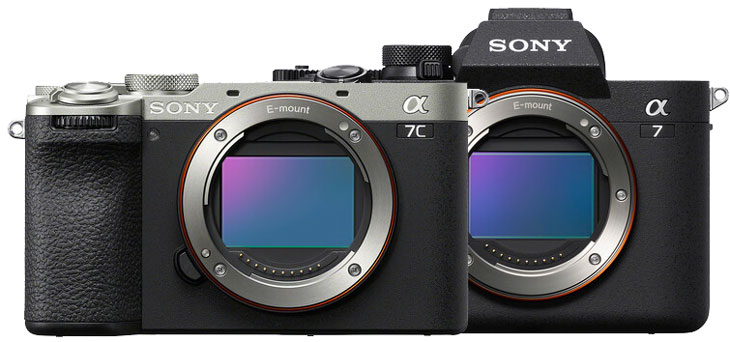
If you compare the Sony A74 versus the Sony A7C II, let me tell you one thing very clearly. The Sony A7C II camera features the same 33-megapixel full-frame CMOS sensor, Even the AF system of the Sony A7C II camera is much more advanced due to the presence of dedicated artificial intelligence CHIP inside, compared to the Sony A74 camera. Now, we all know that if a baseline product/product with a lower price range has as many special features as its higher-end body, then for sure it will cut off the sales of the A74.
To protect it, Sony added some layers of features and design cannibalization, which now depends upon us. Does this crippling hurt the camera’s core, or can we buy it despite the standard crippling done over Sony A7C II to save the Sony A7 IV sales? Which we will explain in this article.
| Lens Mount |
Sony A7C II |
Sony A7 IV |
| Sensor Resolution |
Actual: 34.1 Megapixel
Effective: 33 Megapixel |
Actual: 34.1 Megapixel
Effective: 33 Megapixel |
| Image Sensor |
35.9 x 23.9 mm (Full-Frame) CMOS |
35.9 x 23.9 mm (Full-Frame) CMOS |
| Image Stabilization |
Sensor-Shift, 7 Stops |
Sensor-Shift, 5.5 Stops |
| Built-In ND Filter |
None |
None |
| Capture Type |
Stills & Video |
Stills & Video |
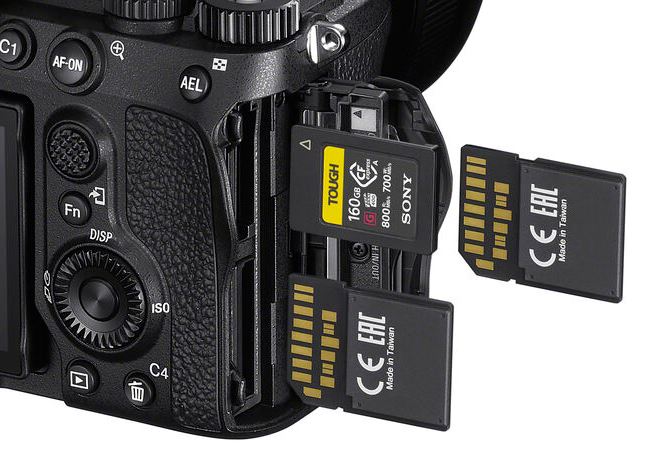
1. DUAL CARD SLOT
From the design point of view, there is a basic design difference between the two. The Sony A7C II camera has only a single card slot compatible with UHS-II V90 cards, while the Sony A7 IV camera features dual card slots in which you can have UHS-II and CFexpress in the other.
2. Full-size HDMI in Sony A7 IV
The other biggest advantage I see in the Sony A7 IV camera is the presence of a full-size HDMI port, which is missing in the Sony A7C II camera.
3. Anti-Dust Shutter in Sony A7IV
The Sony A7 IV camera also features an anti-dust settling mechanism that covers the sensor and protects it. In the Sony A7C II camera, we have an EFCS shutter, so due to the absence of a fully functional mechanical shutter, we do not have such a feature in this camera.
4. Display Difference
On the display side, the Sony A7 IV has a slightly higher resolution electronic viewfinder (3690k dotvs2360k dot) with a better magnification ratio, as well as a slightly higher resolution LCD screen (1.440k dots vs. 1.030k). The position of the viewfinder is also different in both cameras.
The rest of the things are the body controls. The Sony A7 IV camera has a bit more advanced features, such as a joystick controller on the rear side and a center-placed viewfinder, which generally helps a photographer a bit more in handling a camera and using it while composing a perfect shot
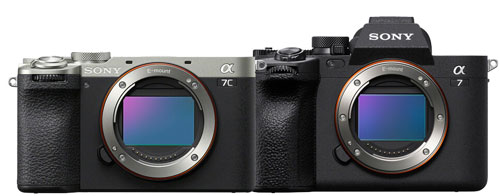

5. Size Difference
As you can see, the Sony A7C Mark II camera is more compact, whereas the A7 IV is a bit bulky. Due to the nature of construction and the type of series they belong to, both have their design interface. So, design-wise, for a professional photographer, undoubtedly the Sony A7 IV camera looks more promising.
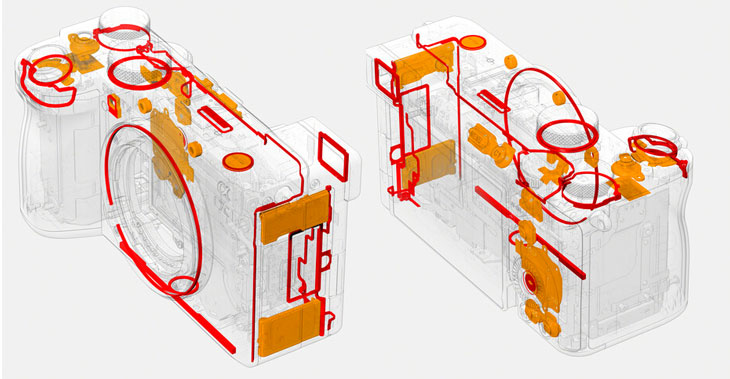
6. Heat Sink
Heat Sink According to initial reports, the heat sink mechanism of the Sony A7C Mark II camera is slightly better at dissipating heat from the body in an outward direction. This is one of the biggest reasons why Sony skipped the CF express card in the A7C Mark II camera. With the use of a UHS-II V90 card (See V90 Cards at Amazon), you can record 4K at all resolutions without any major issues.
Does The Absence Of Full Mechanical Shutter Affect The Performance Of The Camera? It all depends upon your usage. If you want to capture portraits at a very high shutter speed which is somewhere around 1/4000 of a second up to 1/8000 of a second in that very specific scenario most cameras with mechanical shutters are not open to some of these special situations then undoubtedly, the A7C Mark II camera’s EFCS (Electronic Front Curtain Shutter) is very usable.
|
Sony A7C II |
Sony A7 IV |
| Shutter Type |
Electronic Shutter, EFCS |
Electronic Shutter, Mechanical Focal Plane Shutter |
| Anti Dust Shutter |
No |
Yes |
| Shutter Speed |
1/4000 to 30 Seconds
1/8000 to 30 Seconds
1/8000 to 1 Second in Movie Mode |
1/8000 to 30 Seconds
1/8000 to 1/4 Second in Movie Mode |
| Bulb/Time Mode |
Bulb Mode |
Bulb Mode |
| ISO Sensitivity |
Photo
100 to 51,200 in Manual Mode (Extended: 50 to 204,800)
100 to 12,800 in Auto Mode
Video
100 to 51,200 in Manual Mode (Extended: 50 to 102,400)
100 to 12,800 in Auto Mode |
Photo
100 to 51,200 in Manual Mode (Extended: 50 to 204,800)
100 to 12,800 in Auto Mode
Video
100 to 51,200 in Manual Mode (Extended: 100 to 102,400)
100 to 51,200 in Auto Mode |
| Exposure Modes |
Aperture Priority, Auto, Manual, Program, Shutter Priority |
Center-weighted average, Highlight Weighted, Multi-Zone, Spot |
| Continuous Shooting |
Up to 10 fps for up to 44 Frames (Raw) / 1000 Frames (JPEG) |
Up to 10 fps at 33 MP for up to 1000 Frames (Raw) / 1000 Frames (JPEG) |
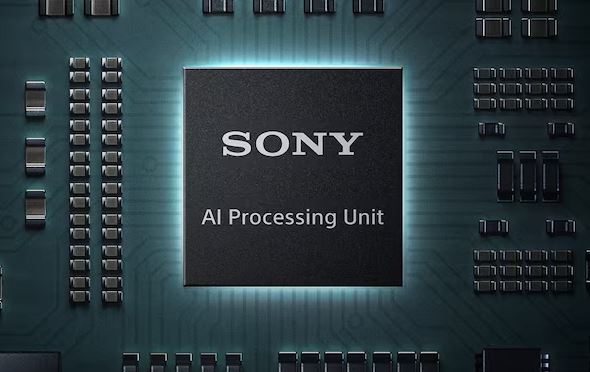
7. Dedicated AI CHIP
AI Chip The introduction of a dedicated artificial intelligence chip inside this camera has improved its overall performance significantly. Specifically, when we talk about autofocus performance, the 3D object tracking has improved greatly.
Continuous Shooting Speed The biggest improvement that we might see between these two cameras is their ability to track moving subjects while using burst mode. Both feature 10 frames per second continuous burst speed, but now the autofocus performance of the A7C Mark II camera is much improved compared to the Sony A74.
The buffer size of the Sony A74 camera remains larger, one of the biggest reasons being its ability to adopt a CF express-type card slot. The memory of the A7C Mark II camera is slightly limited to 100 frames.
8. IBIS
Image Stabilization With the introduction of the A7 Mark II camera, Sony also introduced a brand new sensor-shift image stabilization mechanism which is very helpful for photographers. Now, the overall IBIS support goes up to 7 stops, and in the Sony A74 camera, it is limited to 5.5 stops.
So if you’re a handheld photographer then undoubtedly, the A7C Mark II camera will help you a lot with its autofocus performance and ability to capture more stable images and footage.
|
Sony A7C II |
Sony A7 IV |
| Internal Recording Modes |
H.265/XAVC HS 4:2:2 10-Bit
UHD 4K (3840 x 2160) at 23.98/50/59.94 fps [50 to 200 Mb/s]
H.265/XAVC HS 4:2:0 10-Bit
UHD 4K (3840 x 2160) at 23.98/50/59.94 fps [30 to 150 Mb/s]
H.264/XAVC S-I 4:2:2 10-Bit
UHD 4K (3840 x 2160) at 23.98/25/29.97/50/59.94 fps [240 to 600 Mb/s]
1920 x 1080p at 23.98/25/29.97/50/59.94 fps [89 to 222 Mb/s]
XAVC S 4:2:2 10-Bit
UHD 4K (3840 x 2160) at 23.98/25/29.97/50/59.94 fps [100 to 200 Mb/s]
1920 x 1080p at 23.98/25/29.97/50/59.94 fps [50 Mb/s] |
XAVC HS 4:2:2/4:2:0 10-Bit
3840 x 2160 at 23.98/50/59.94 fps [30 to 200 Mb/s]
XAVC S 4:2:2/4:2:0 8/10-Bit
3840 x 2160 at 23.98/25/29.97/50/59.94 fps [60 to 200 Mb/s]
1920 x 1080 at 23.98/25/29.97/50/59.94/100/120 fps [16 to 100 Mb/s]
XAVC S-I 4:2:2 10-Bit
3840 x 2160 at 23.98/25/29.97/50/59.94 fps [240 to 600 Mb/s]
1920 x 1080 at 23.98/25/29.97/50/59.94 fps [89 to 222 Mb/s] |
| External Recording Modes |
4:2:2 10-Bit via HDMI
UHD 4K (3840 x 2160) at 23.98/25/29.97/50/59.94 fps
1920 x 1080p at 23.98/50/59.94 fps
1920 x 1080i at 50/59.94 fps
4:2:0 8-Bit via HDMI
UHD 4K (3840 x 2160) at 23.98/25/29.97/50/59.94 fps
1920 x 1080p at 23.98/50/59.94 fps
1920 x 1080i at 50/59.94 fps |
4:2:2 8/10-Bit via HDMI
UHD 4K (3840 x 2160) at 23.98/25/29.97/50/59.94 fps
HD (1920 x 1080p) at 23.98/50/59.94 fps
HD (1920 x 1080i) at 50/59.94 fps |
| AI AUTO FRAMING |
Yes |
NO |
| Enhanced AI AF |
Yes (Dedicated AI CHIP) |
NO |
| IBIS VIDEO |
7 STOPS / GYRO Support |
5.5 Stops Gyro Support |
| Gamma Curve |
HDR-HLG, Sony S-Log 2, Sony S-Log 3 |
S Cinetone, Sony S-Log 3 |
| Recording Limit |
None |
None |
| Broadcast Output |
NTSC/PAL |
NTSC/PAL |
| IP Streaming |
MJPEG, UVC/UAC
3840 x 2160 at 12.5p, 14.99p, 25p, 30p
1920 x 1080 at 25p, 30p, 50p, 60p
1280 x 720 at 25p, 30p |
MJPEG, UVC/UAC
3840 x 2160 at 12.5p, 14.99p, 25p, 30p
1920 x 1080 at 25p, 30p, 50p, 60p
1280 x 720 at 25p, 30p |
| Built-In Microphone Type |
Stereo |
Stereo |
| Audio Recording |
XAVC S: 2-Channel 16-Bit 48 kHz LPCM Audio
MPEG4: 2-Channel AAC LC Audio |
2-Channel 16-Bit 48 kHz LPCM Audio |
9. Videographics Difference Between Both The Cameras
Resolution-wise both cameras feature exactly the same video resolution, Record in 10-bit 4:2:2 using the advanced XAVC S-I format for consistent performance and quality at bitrates up to 600 Mb/s.
With the introduction of the AI chip in Mark II camera tracking performance has improved significantly in videography. The camera is able to track moving subjects from afar and even eye detection is now much more accurate even in animals and insects while you are creating your video.
10. User Uploadable LUT and AI Framing
Other big differences like in professional cameras we have user-uploadable LUTs (Look-Up Tables). With this feature, you are able to control output in a much better way optimizing your workflow as desired.
Auto Framing With introduction of dedicated AI chip we also have an opportunity for artificial intelligent auto framing.
Enhanced Heat Sink Unit As I have said in this post, The A7C Mark II camera’s heat dissipation system is now much more improved and distributes heat effectively.
11. Price Difference vs Features Difference
If you compare the price and specifications we are getting with the Sony A7C Mark II camera it’s much more compared to the set of features that we are getting with the A74. If you want to have the same set of features with the A74 camera body you have to wait for the Sony A75 camera announcement. Otherwise, we highly recommend you get the Sony A7C Mark II camera while looking at its core specification and price ratio.
Sony A7C II Body Price $2198 B&H STORE | AMAZON.com
Sony A7 IV Body Price $2498 B&H STORE | AMAZON.com
By admin, on September 11th, 2023
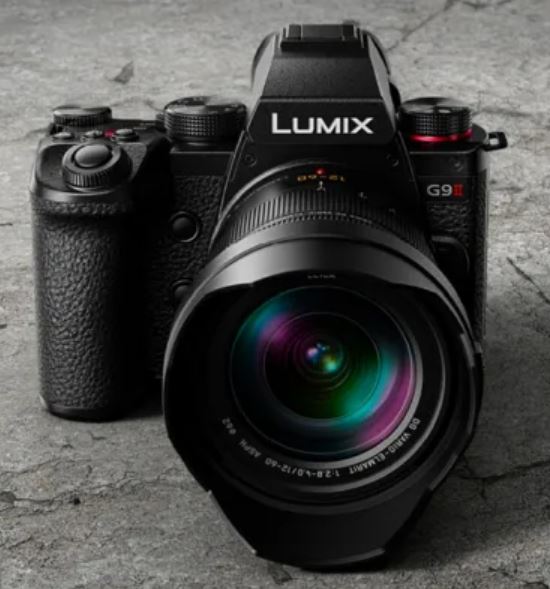
Panasonic G9 II, boasts a new 25.2 million pixel image sensor and a new engine, above all the image plane phase-detection AF guarantees sharp, precise focus, while the 60fps AFC continuous shooting. The camera also features up to 8.0 stops of image stabilization and 4K/4 K 60p 4:2:2 10bit recording and comes with a pre-installed V-Log, providing more flexibility for post-production. The camera also supports C4K/4K 10bit 120p/100p, enabling super slow-motion video capture. More Details below
Panasonic G9 II Specification
- New 25.2 million pixel image sensor
- new engine
- Image plane phase detection AF
- 60fps AFC continuous shooting
- 8.0 stops of image stabilization
- 7.5 steps Dual IS
- C4K/4K 60p 4:2:2 10bit
- V-Log
- 1.84 million dot tilt free angle monitor
- 3.68 million dot OLED viewfinder
- Dustproof and splashproof
- Capable of continuous shooting for 3 seconds without blackout
- Pre-continuous shooting function
- ~AFS 75fps
- LEICA Monochrome with L2 technology
- Real-time LUT
- C4K/4K 10bit 120p/100p
- 8 direction joystick
- Wifi
- Bluetooth
- Lineup covering from 16mm to 1600mm (35mm format equivalent)
Stay tuned more updates coming
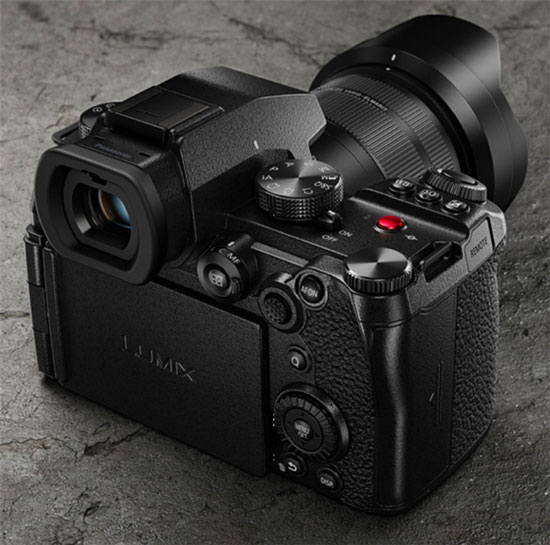
Follow us on our social pages FACEBOOK | TWITTER | INSTAGRAM, to get LIVE News and Panasonic Rumor
source asobinet.com
By admin, on August 29th, 2023
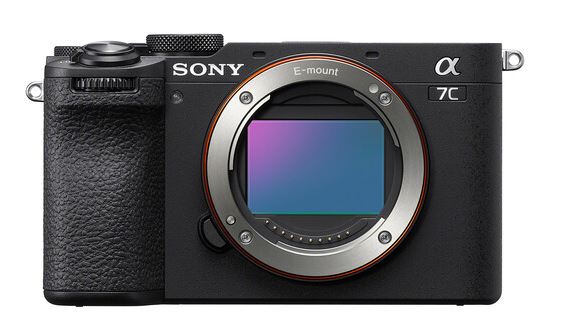
Sony today has announced the Sony A7C II camera. The camera features the goodness of Sony A7 IV, but you also get an AI (Artificial Intelligence) autofocus algorithm which was completely absent in the Sony A7 IV camera. The camera has the same sensor and image processor as the Sony A7 IV, but it is integrated with an AI chip. The camera is available at an affordable cost compared to the Sony A7 IV camera.
However, to protect the sales of the Sony A7 IV camera, Sony has crippled the card system. You only get a single memory card slot in this camera and no joystick on the gear side of the camera. The new system is much more capable and doesn’t demand too much jumping here and there so we can manage that.
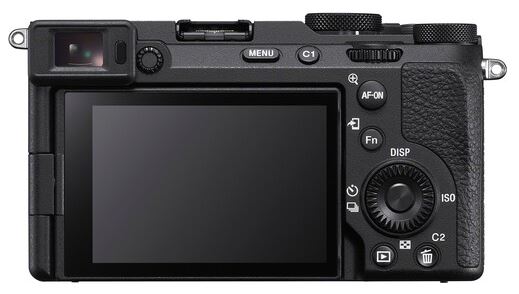
In the video part, the camera is still as impressive as we have in the higher budget Sony A7 IV camera. We also get the support of AI framing which is not present in Sony A7 IV as well as artificially intelligent autofocus algorithm support. With these features, we do have the ability to record oversampled 4K 24 and 30 fps videos as well as capturing ability up to 60 frames per second but at super 35 mm format that is up to 1.5 X crop will be applicable.
Overheating test results are not widely available yet. The main issue that I personally feel is that the camera does not allow you to use CF express cards. So if you want to record high-quality videos with the Sony A7C II camera, it is highly recommended to use v90 cards in the camera.
If you’re thinking about which camera to buy, it is highly recommended that you should go with the Sony A7C II camera.
The new Alpha 7C II is available at B&H Store for pre-order
Sony A7C II Press Release
Including the Alpha 7C R with 61MPi High-Resolution Sensor and the Alpha 7C II with the latest still image and video performance
SAN DIEGO, CA. August 29, 2023 – Today, Sony Electronics announces the release of two new additions to the Alpha 7C series of compact full-frame interchangeable lens cameras, the Alpha 7C II (model ILCE-7CM2) and Alpha 7C R (model ILCE-7CR). The Alpha 7C II is equipped with a full-frame image sensor with approximately 33.0 effective megapixels and features the latest still image and video functions and performance in a compact and lightweight design (approximately 4.88 in wide x 2.8 in high x 2.5 in deep and weighs approximately 18.1 oz.) It is the second-generation version of the Alpha7 C, which is celebrated for its combination of performance and features in a compact size, perfect for a wide range of shooting scenarios such as travel and street photography.
The Alpha 7C R is a new compact full-frame interchangeable lens camera, boasting the high-resolution and rich gradation performance of a full-size image sensor with approximately 61.0 effective megapixels, the same sensor found in the Alpha 7R V, into a compact and lightweight body (similar size and weight as the Alpha 7C IIii , approximately 18.2 oz). In addition to daily snapshots, it easily realizes high-quality image capture in a wide variety of settings, such as portrait, wildlife, and landscape photography, meeting the expectations of creative work with mobility.
Both models are equipped with the same AI-processing unit and BIONZ XR® processors found in Sony’s newest interchangeable lens cameras such as the Alpha 7R V and Alpha 6700. Real-time Recognition AF recognizes a wide variety of subjects with high accuracy, and 5-axis in-body mage stabilization provides a 7.0 stepiv shooting advantage when capturing stills. In terms of video performance, both models support high-quality 4:2:2 10-bit video recording up to 4K60piii, and both models support Sony’s acclaimed S- CinetoneTM color science for rich cinematic video. In addition, they have Active Mode in-body image stabilization, AI-based auto-framing, digital-audio interface support, and other features that support high- quality video shooting.
“At Sony, we’re committed to continually raising the bar and elevating standards for content creators. With the introduction of the Alpha 7C II and Alpha 7C R models, we’re offering an innovative solution that serves creators in both photography and videography. This fresh addition to their toolkit ensures top-tier imagery and visual performance across our state-of-the-art imaging devices. By fusing advanced technology with user-friendly design, we’re empowering content creators to realize their artistic vision like never before,” says Yang Cheng, Vice President, Imaging Solutions, Sony Electronics.
As the demand for sending and sharing captured content on social media networks has increased, more creators are looking for a combination of compact size and high imaging performance in mirrorless interchangeable lens cameras. With the introduction of the Alpha 7C II and Alpha 7C R, which achieve high mobility and high-quality image expression in a compact size, Sony responds to the wide range of image expressions sought by creators.
Main Features of the Alpha 7C II
- Equipped with a full-frame back-illuminated Exmor R® CMOS sensor with approximately 33.0 effective megapixels and the latest BIONZ XR® image processing engine to achieve high imaging performance. For capturing either still images or movies, users can easily enjoy high-quality image capture in a wide range of scenes such as travel and daily snapshots.
- Compared to the Alpha 7 IV which is approximately 5.1 inches x 3.8 inches x 3.2 inches and weighs approximately 1.54 lbs, the Alpha 7C II is approximately 22% lighter and has approximately 45% less volume.
- The standard ISO sensitivities range from 100 to 51200 for both still images and movies (expanded ISO 50 to 204800 for still images), enabling high-sensitivity, noise-free shooting.
Main Features of the Alpha 7C R
Equipped with a full-frame back-illuminated Exmor R® CMOS sensor with approximately 61.0 effective megapixels and the latest BIONZ XR® image processing engine to achieve high-resolution and high-definition imaging performance.
Compared to the Alpha 7R V which is approximately 5.25 inches x 3.875 inches x 3.25 inches and weighs approximately 1.6 lbs, the Alpha 7C R is approximately 29% lighter and has approximately 53% less volume.
The standard ISO sensitivity ranges from 100 to 32000 for both still images and movies (expanded ISO 50 to 102400 for still images).
In addition, with 7.0-stepiv optical 5-axis in-body image stabilization, even slight blurring at the 1- pixel level is detected and corrected.
Equipped with Pixel Shift Multi Shooting that combines multiple images on a PC to create an ultra-high resolution image.
By combining with the grip extension GP-X2 included with the Alpha 7C Rv, you can shoot comfortably with a stable hold even when shooting for long periods of time or using a telephoto lens.
Common Features of the Alpha 7C II and Alpha 7C R
1. Compact size and high mobility
Both models are easy to handle and easy to carry. Compact size (both models are approximately 4.88 in wide x 2.8 in high x 2.5 in deep) and weighi approximately 18.1 oz for the Alpha 7C II and approximately 18.2 oz for the Alpha 7C R. When combined with the wide-angle zoom lens, FE 16-35mm F2.8 GM II, announced today, it achieves the excellent image expression and high-speed AF that are unique to the G MasterTM series, with the brightness of F2.8 at full zoom range. The user can choose their favorite lens from Sony’s extensive E-mount series of more than 70 lenses and enjoy a variety of image expressions in both still images and movies.
2. AF performance with improved subject recognition performance thanks to the built-in AI processing unit
Equipped with the same AI-processing unit as the Alpha 7R V, which recognizes subjects with high accuracy with Real-time Recognition AF. For example, when taking a picture of a person, even if the subject strikes a complicated pose or their face is hidden, human-pose estimation technology can be used to capture and track the subject with high accuracy. In addition to the existing tracking capabilities for people and animals already found in the Alpha 7C series, it is now possible to recognize birds, insects, cars, trains, and airplanes as subjects in the new models.
3) Advanced video performance
The Alpha 7C II and Alpha 7C R condense high-resolution and detailed video data equivalent to 7K and 6K, respectively, and can output high-quality 4K video. Equipped with S-Log3, which supports a wide latitude of 14+ stopsvi, it renders rich gradation with little overexposure and underexposure even in scenes with contrast. Also, in Log shooting mode, the LUT imported by the user can be displayed on the camera monitor image, allowing the user to shoot while checking the finished image in post-production. In addition, it is equipped with S-CinetoneTM, a unique Sony feature which can create a cinematic look straight out of the camera without post-processing. Based on Sony’s Cinema Line technology, S-Cinetone delivers natural mid-tones that are essential to healthy-looking skin color and deliver cinematic quality. It also features Creative Look, which allows you to easily change the look and feel of video and still images.
4) Operability and connectivity
Equipped with a touch-operable vari-angle LCD monitor, intuitive operation with the latest touch menu supports comfortable shooting. In addition to the new front dial that allows the user to assign their favorite functions, the still image/movie/S&Q switch dial, and an XGA high-resolution viewfinder, etc., the camera is easy to use. The camera is equipped with a 7.0-stepiv optical 5-axis in-body image stabilization to support stable camera work.
In terms of connectivity, the camera is compatible with the smartphone application Creators’ Appvii that uploads videos and still images taken with the camera to a cloud service, while allowing remote camera operation and image transfer from the camera to mobile devices. By the end of September 2023, Sony plans to support a new version of the software development kit Camera Remote SDK that enables remote operation and settings adjustments.
5) Designed with environmentally friendly principles in mind
Over the past 11 years, Sony has replaced approximately 395 tonsviii of virgin plastic with recycled plastic in digital cameras and digital video cameras. Recycled materials, including SORPLASTMix, are used for the camera body, reducing environmental impact without sacrificing functionality. In addition to being equipped with Sony’s Screen Reader functionx that reads menus and video playback screens aloud to assist operations, a new menu Magnify Display function has been added to support the creative activities of a variety of creators.
Pricing and Availability
The new Alpha 7C II will be available in Fall 2023 at a variety of Sony’s authorized dealers: Camera only: MSRP $2199.99 USD, $2999.99 CAN
Camera w/ 28-60mm lens: MSRP $2499.99 USD, $3399.99 CAN
The new Alpha 7C R will be available in Fall 2023 at a variety of Sony’s authorized dealers: Camera only: MSRP $2999.99 USD, $4099.99 CAN
The new GP-X2 extension will be available in Fall 2023 at a variety of Sony’s authorized dealers for MRSP $159.99 USD, $214.99 CAN.
For detailed product information of the new Alpha 7C II, please visit:
By admin, on August 19th, 2023
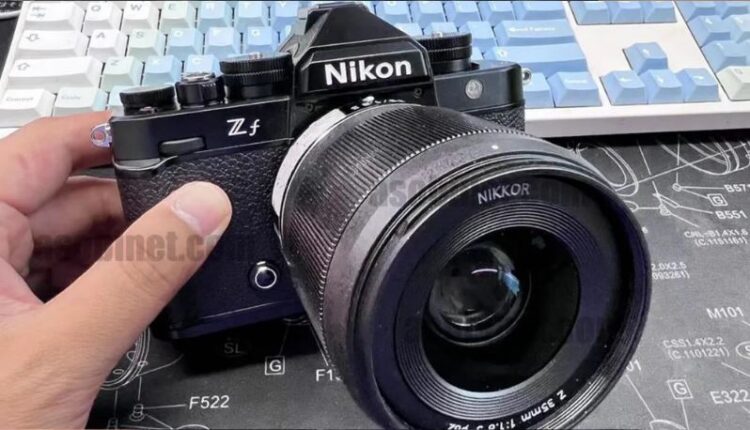
We have received an updated set of the core specification of the Nikon Zf camera. Take a look at the updated set of core specifications in bold.
Nikon Zf Updated Core Specification
- Black camera body
- 24.4 MP BSI-CMOS sensor
- Expeed 7 processor
- Weight: 700g (inc. battery, the Z5 is 590g, the Z6II is 615g )
- Dimensions: 144mm x 101mm
- Up to 30fps (JPG/HEIF)
- High Extended Shooting for RAW and HEIF
- 4k 60 video CROP
- 10-bit H.265 HEVC video (SDR/HLG/N-log)
- 1080 120p
- USB C PD (fast-charging technology based on the USB-C standard)
- ISO 100-64,000 (for comparison the Z6II ISO range is 100-51,200)
- AF (273 focus points) comes with features from Z8/Z9 with 3D tracking
- Shutter selection options: Mechanical / Electronic Front-Curtain / Auto
- AF (273 focus points) comes with features from Z8/Z9 with 3D tracking
- New feature related to AF
- EN-EL15 battery
- The Z f logo is moved to the left (the Zfc has it on the right)
- Dual memory card slots (SD+MicroSD) – this is probably why the first reports came out with only one memory card slot, the second slot could
- be hidden and be used just like the internal memory on some cameras
- Pixel Shift: new high-res mode will be implemented for the first time in a Nikon mirrorless camera
- August-September announcement, shipment before the end of 2023
- Improved autofocus compared to Z5/Z6II
- A few different lens kits/bundles will be available in the $2,000-$2,500 price range
- Price for body only: $1,999
- One of the bundles will be with the Nikkor Z 40mm f/2 (SE) lens (no new lens will be introduced with the Zf)
- Very similar (but improved) design/layout from the Nikon Zfc
- Small LCD screen on top for aperture display
- New 3rd function on the sub lever of the shutter speed dial (besides photo/video) for B&W mode (B&W/Photo/Movie)
- Has a little grip/bump like the Nikon Df (see the mockup pictures)
- Better build quality compared to the Nikon Zfc
- Fully articulating screen
- Magnesium Alloy body
- Size: 144mm x 101mm x 57mm
- Code name N2137
We will post an update soon as we get it
Follow us on our social pages FACEBOOK | TWITTER | INSTAGRAM to get live news + Nikon Rumors 24X7
source NR.com
By admin, on August 16th, 2023

EISA 2023 – 2024 Photography Awards List – Take a look at the list of EISA photography award winners.
EISA CAMERA OF THE YEAR 2023-2024
Nikon Z 8
EISA ADVANCED FULL-FRAME CAMERA 2023-2024
Sony Alpha 7R V
EISA FULL-FRAME CAMERA 2023-2024
Canon EOS R6 Mark II
EISA CONTENT CREATOR CAMERA 2023-2024
Sony ZV-E1
EISA APS-C CAMERA 2023-2024
Fujifilm X-H2
EISA BEST BUY CAMERA 2023-2024
Canon EOS R8
EISA VIDEO CAMERA 2023-2024
Panasonic Lumix S5IIX
EISA LENS OF THE YEAR 2023-2024
Sony FE 20-70mm F4 G
EISA WIDEANGLE ZOOM LENS 2023-2024
TAMRON 20-40mm F/2.8 Di III VXD
EISA STANDARD PRIME LENS 2023-2024
Sony FE 50mm F1.4 GM
EISA PORTRAIT LENS 2023-2024
Nikon NIKKOR Z 85mm f/1.2 S
EISA TELEPHOTO LENS 2023-2024
Canon RF 135mm F1.8L IS USM
EISA SUPER-TELEPHOTO LENS 2023-2024
Nikon NIKKOR Z 400mm f/4.5 VR S
EISA TELEPHOTO ZOOM LENS 2023-2024
TAMRON 50-400mm F/4.5-6.3 Di III VC VXD
EISA SUPER-TELEPHOTO ZOOM LENS 2023-2024
SIGMA 60-600mm F4.5-6.3 DG DN OS | Sports
EISA MACRO LENS 2023-2024
OM System M.Zuiko Digital ED 90mm F3.5 Macro IS Pro
source eisaEU
By admin, on August 12th, 2023
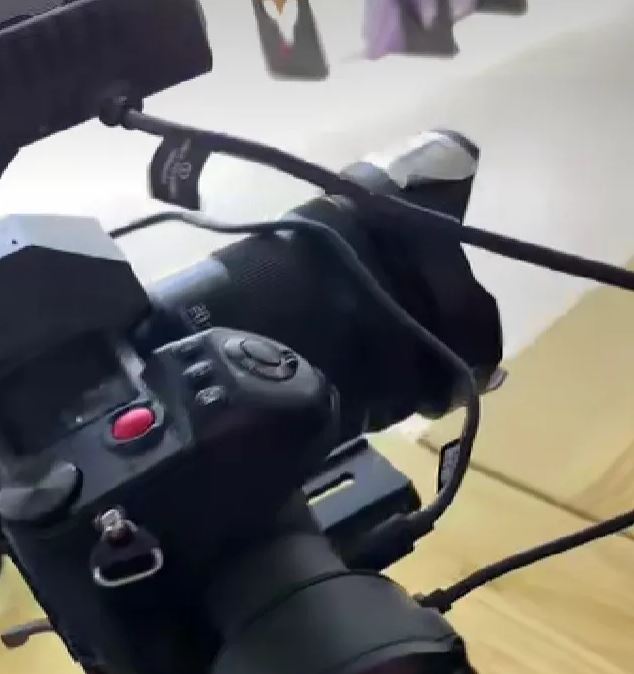
We have just published the news that Panasonic will soon update its major camera firmware to make it compatible with LiDAR (Light Detection and Ranging) autofocusing system.
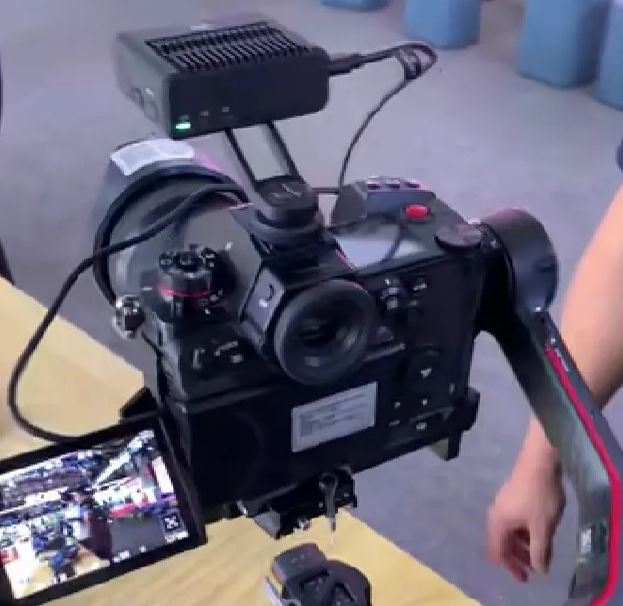
Pics that show the Panasonic S1H camera working in calibration with the LiDAR autofocusing system + RS Pro 3 gimbal to stabilize the camera. Although We don’t have that much detail on how the autofocus performed during the test, the combination of LiDAR autofocusing system with RS Pro 3 gimbal and Lumix S1H camera isn’t a cheap package.

Instead putting time on Lidar Tech, they should announce S1H Mark II with Hybrid Sensor asap – TNC
At the same time, they say they have already DEVELOPED their hybrid CMOS SENSOR, and we have already seen it in the Panasonic S5 MARK II mirrorless camera. Then, instead of investing time and money in LiDAR autofocusing system, it’s better to announce a new series of updated sensors for all their pro cameras with a hybrid system that they already have.
See more –
Panasonic G9 Mark II Rumors
source – asobinet.com
By admin, on July 31st, 2023
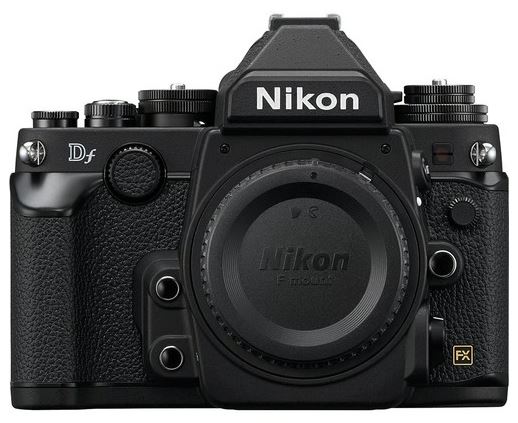
We have some additional information about the upcoming Nikon ZF full-frame mirrorless camera. The body price of the camera is confirmed to be under $2000 which is really a great surprise if true, the camera will have the same sensor that we have seen in the Nikon Z7 Mark II and not the Nikon Z8 (as we all know that both have the same 45.7 MP sensor resolution, but due to the integration of stacked CMOS sensor technology the manufacturing cost of the Nikon Z8 / Nikon Z9 sensor is much more and not feasible for Nikon to out the stacked CMOS sensor inside the upcoming Nikon Zf, it will use the same sensor as of Nikon Z7 Mark III.)
Take a look at the bundles of Nikon ZF mirrorless cameras to be announced soon
Nikon ZF Specification [Updated]
- 45.7MP FX-Format BSI CMOS Sensor
- Same sensor as of Nikon Z7 Mark II
- 10 fps Cont. Shooting, ISO 64-25600
- 493-Point Phase-Detect AF System
- Improved autofocus compared to Z6II/Z7II
- 3.6m-Dot OLED Electronic Viewfinder
- Very similar to the Nikon Zfc in terms of design/layout
- small LCD screen on top for aperture display
- New 3rd function on the sub lever of the shutter speed dial (besides photo/video) for B&W mode
- Has a little grip/bump like the Nikon Df (see the mockup pictures included in this post)
- Single SD memory card slot
- Better build quality compared to the Nikon Zfc
- Fully articulating screen
- Price for body only: $1,999
- Arrival on Aug 2023
- Nikon ZF Body Only (Black & Silver)
- Nikon ZF with 24-70mm F4 Lens
- Nikon ZF with 40mm SE Prime
- Shipping starts from the End of September 2023
Stay tuned more updates coming
Follow us on our social pages FACEBOOK | TWITTER | INSTAGRAM to get live news + Nikon Rumors 24X7
|
KEEP THIS BLOG ALIVE - Support New Camera Buy Canon Lenses, Buy Music CD or Digital Camera at amazon it helps this site, and you do not pay anything extra, it is just a way to help support this site.

|





















